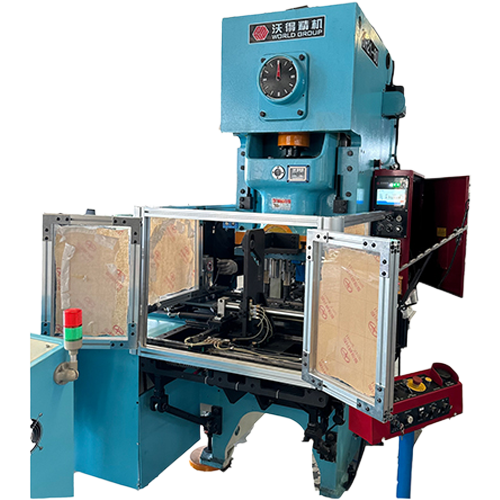What is the principle of automatic sealer?
Fully automatic can sealing machines are usually used in automated production lines and high-volume production lines. Since this model is modified from a drilling machine, domestic can sealing machines are generally bulky and heavy. Due to its high cost, large output and high technological content, it is highly favored by large enterprises.
The automatic sealing machine is shown in the figure:

The equipment is mainly used for automatic capping of tanks, and the production speed is usually 50~200 tanks/minute.
Working principle:
1. The tank flows into the capping machine after being filled from the loading channel.
2. The six-claw rotating mechanism transports the tank to the capping station, and the automatic capper completes the capping.
3. The six claws continue to rotate to the next station, and the first curling knife begins to pre-curl.
4. The six claws continue to rotate to the next station, and the second crimping knife presses the edge of the tank mouth.
5. Finished product output.
Application range of sealing machine:
Fully automatic sealing machine is suitable for single product multiple varieties, high-volume production. According to the material characteristics, the front process is often equipped with liquid filling machines, powder filling machines and other equipment, while the rear process is often used in conjunction with labeling machines, inkjet printers, etc.
Production line process flow:
The packaging process for canned beer is simpler and easier to control than for bottled and cask beer. The core equipment of the automated canning production line includes: depalletizer, canning and sealing machine, sterilizer and carton sealing machine. The filling speed can reach 1,000 cans per minute, which is comparable to the performance of the canning equipment in the top plant.
Recommended Products


 EN
EN
 中文简体
中文简体 English
English













